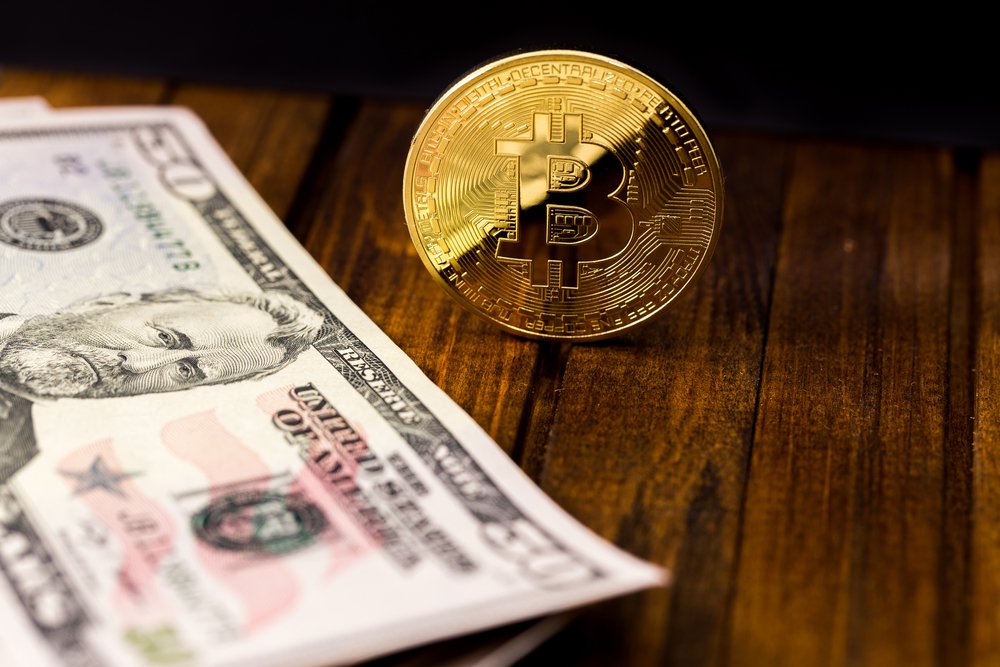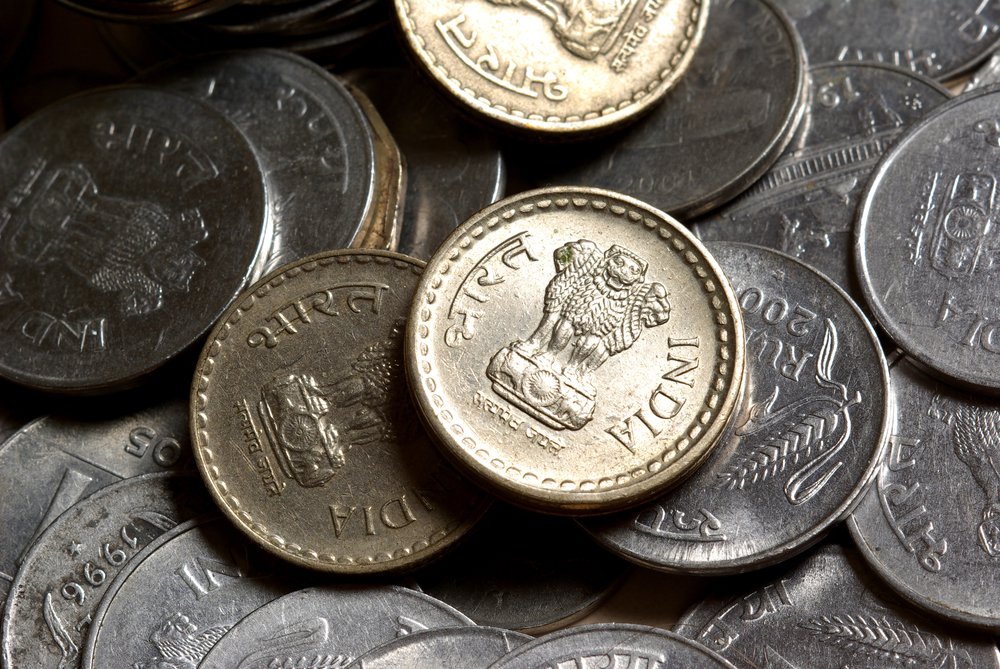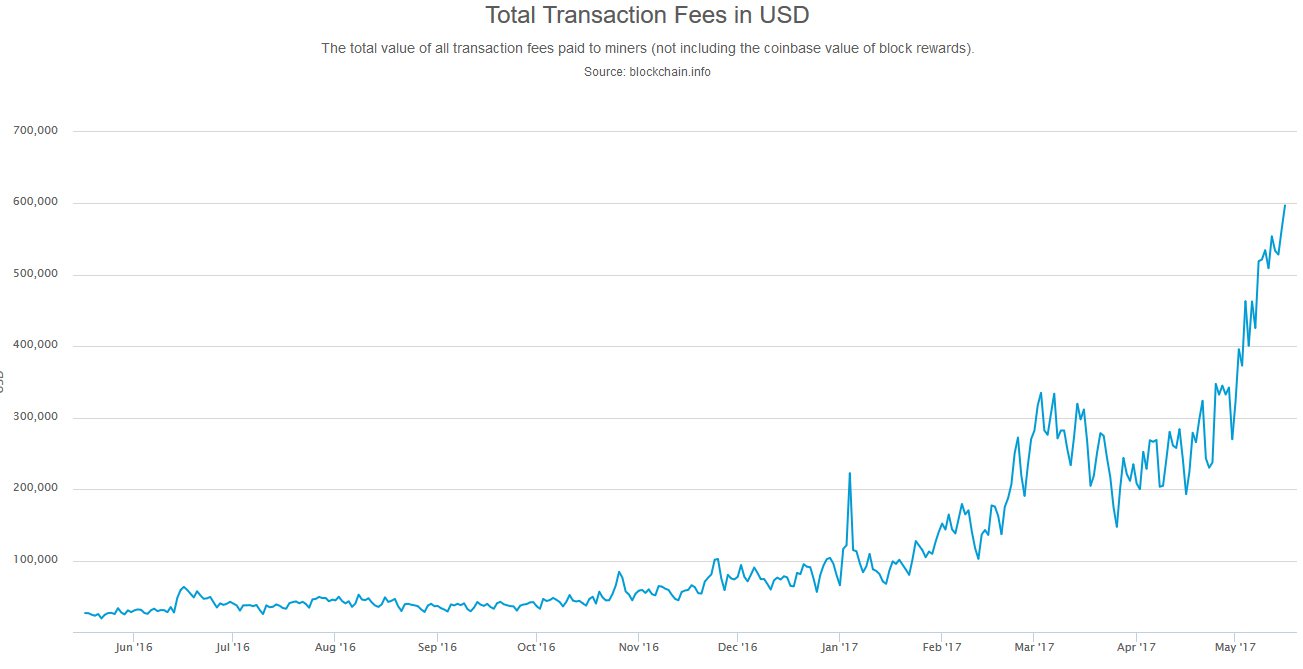
Bitcoin Should Figure in Your Investment Porfolio
Boris Schlossberg of BK Asset Management has joined the cadre of investment advisors who see bitcoin as a way for investors to hedge their bets against market uncertainty. Schlossberg, according to CNBC, sees bitcoin as an addition to an investment portfolio in the wake of political uncertainty.
CNBC’s “Trading Nation” explored ways for investors to hedge against growing political uncertainty following Wednesday’s big equities selloff. Stocks traded slightly higher on Thursday following the market’s biggest sell day of the year.
Investors are also being advised to look to international markets.
Bitcoin The New Gold
Schlossberg sees parallels between bitcoin and gold, and he noted that bitcoin is being called the “new gold,” due to its ability to retain value over time.
He noted that bitcoin is holding steady following its 92% rally this year. Speaking Wednesday on “Trading Nation,” Schlossberg said the cryptocurrency is holding at steady highs, and that when there is a big move for any type of instrument, there is usually some continuation.
Bitcoin is clearly signaling more demand, Schlossberg observed. He favors it as a hedge play moving forward.
Advisors Bullish On Bitcoin
Schlossberg is one of several investment advisors and investors who is bullish on bitcoin.
Thom Lachenmann and Parke Shall, advisors at Orange Peel Investments, have invested in bitcoin and suggest investors take a small position in the asset for the long term.
Billionaire investor Mike Novogratz has said that he is holding ten percent of his net worth in digital currencies such as bitcoin and Ether.
Charlie Morris, the investment director of the Fleet Street Letter, noted following last year’s bitcoin halving that he is buying the cryptocurrency because he sees it as a cheap stock with an opportunity to grow in value.
Needham & Co. LLC, a New York City-based investment firm, has been covering the Bitcoin Investment Trust, and last year gave it a “buy” rating. The investment company believes the price of the cryptocurrency stands to benefit substantially from rising demand for its two main use cases: as an alternative payments channel and as a “digital gold.” The growing demand is driven by market trends such as expanding ecommerce, globalization, and by the pervasiveness of enabling technology like mobile phones.
Many attribute bitcoin’s recent gains as a sign of its improved acceptance as a currency, despite the recent rejection by the Securities and Exchange Commission of a proposed bitcoin exchange traded fund.
Charlie Morris, the investment director of the Fleet Street Letter, is buying bitcoin. He sees it as a cheap stock with an opportunity to grow in value because of the halving. Morris gave his reasons for being bullish on bitcoin in a column in the Fleet Street Letter, a MoneyWeek Research Publication in London, U.K.
Morris compares the bitcoin halving to gold miners or oil producers cutting their production in half. He asks his readers if they would be more bullish on gold and oil if gold and oil supplies were cut in half. “That’s exactly what’s about to happen to bitcoin, the digital currency,” he noted.
Bitcoin: Limited Supply
Morris wrote that 25 bitcoins are now created every 10 minutes. On July 11, this number drops to 12.5. Four years later, it halves again.
There are currently 15.5 million bitcoins at present and the halving process, which is written into the the cryptocurrency’s software’s code, restricts the supply of bitcoins to 21 million. The supply is expected to reach this limit in about a century.
Scarcity is a feature of bitcoin’s design. It is a feature that distinguishes the cryptocurrency from fiat currency, which can be produced in unlimited amounts.
A Social Media Stock?
While many people buy bitcoin for speculation, their bets will only prove advantageous if other people buy it for its utility. Hence, bitcoin can be viewed as a social media stock in that the more people use it, the greater its value.
Morris described bitcoin as a digital asset that can move across the Internet. It differs from a traditional database in some important ways. With a traditional database, the user goes into the database, opens a file, changes the data and closes the file. Both the seller and the buyer have to do this, along with intermediaries. Because of all the parties involved, there is room for error in settlement.
With a blockchain, the transaction gets recorded onto a new layer of data called a block. That block never changes. A new block comes into existence every 10 minutes. The data stores in a chain of blocks known as a “blockchain.”
Bitcoin, contrary to what many people think, does not have a serial number. Instead, it has provenance.
How The Blockchain Works
In a bitcoin transaction, the system checks to make sure the bitcoin being spent hasn’t already been spent. The system checks this by examining the blockchain, where the transaction history records. There are more than 5,000 identical copies of the blockchain that can be downloaded and examined by anyone. “It’s truly open source.”
Each day bitcoin survives, it quashes its doubters, Morris noted. There are already more than 200,000 daily transactions.
Bitcoin has experienced one boom and bust cycle already. The price rose from under $1 to $1,000 in late 2013, then fell to below $200 in the summer of 2015.
“But the bear has now turned and the price is challenging $500.” This time, there is less hype, and there is also a lot of capital investment. “The network is growing and the supply is falling.”
If the cryptocurrency goes mainstream, it will give Facebook Netflix, Amazon and Google a run for their money, Morris noted.
Another Option: Global Stocks
Mark Tepper, president of Strategic Wealth Partners, points to investments outside the U.S. as a way to find refuge from domestic conditions, according to CNBC. The political risk is shifting toward the U.S., he said.
Global growth, Tepper noted, is much stronger than domestic growth. Globally-oriented companies on the S&P 500 are getting at least 50% of their revenues from overseas. These stocks are “completely crushing” domestically-focused companies in the current earning season.
Tepper said most investors are overly weighted in U.S. stocks since these stocks have outperformed international markets for years. However, he sees a change coming, making him confident that investing abroad makes sense, even as first quarter earnings have been strong for U.S. firms.
Geopolitical risk has faded following South Korean and French elections, he said, which bodes well for foreign markets.
iShares MSCI EAFE ETF, an exchange traded fund that tracks large- and mid-cap equities in developed oversea markets, has gained 13% for the year, Tepper said. The S&P 500, by contrast, has advanced under 6%.
The MSCI Asia Pacific index rose 20% year to date, while Taiwan’s benchmark index rose 22% and European markets have outperformed the S&P 500.
Emerging markets have also rallied. EEM, an ETF that tracks these markets, has gained 15% this year. The fund did drop 2% Thursday when Brazilian equities fell on account of political concerns in the country.
Author: Lester Coleman
I have been investing via Trade Coin Club, which has a program which automatically trades on the top top chyptocurrencies and earn bitcoin 5 days a week and a very happy with the results.
David Ogden
Entrepreneur
David Ogden – Http://markethive.com/david-ogden








